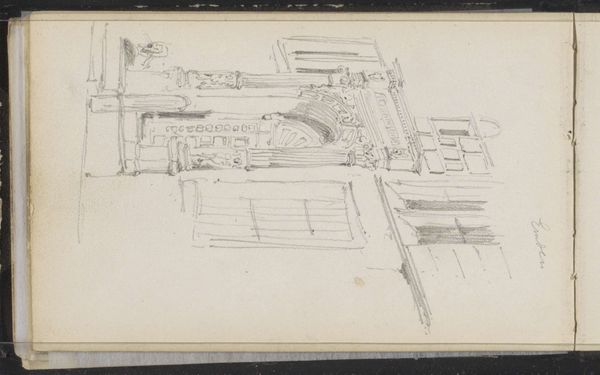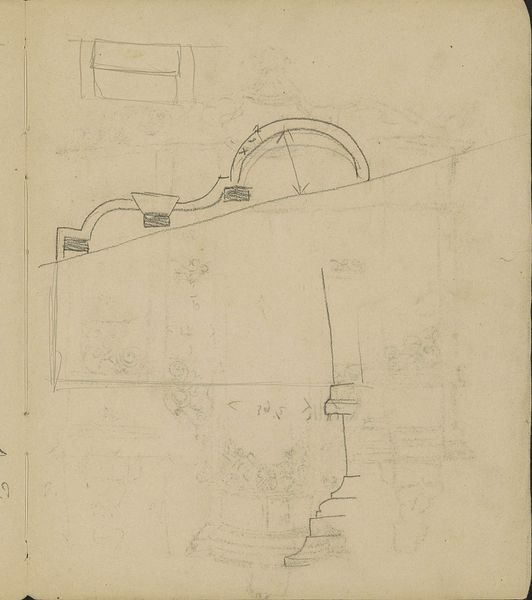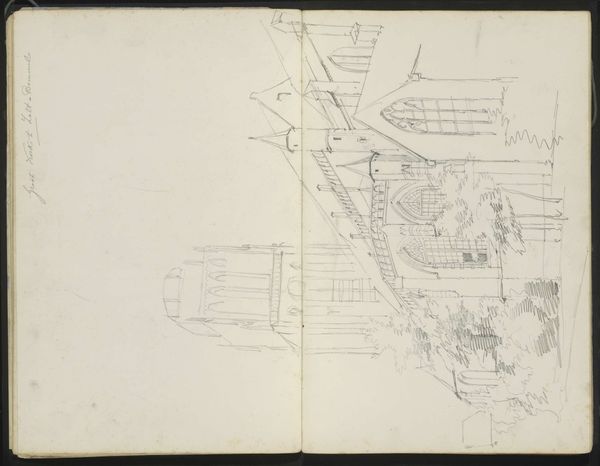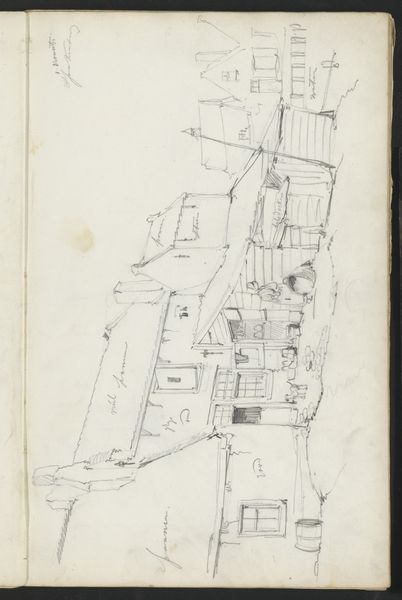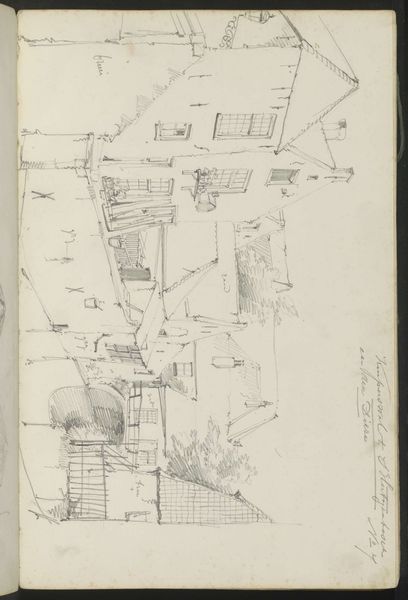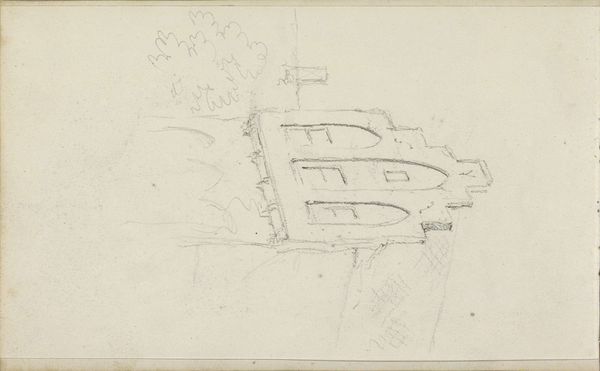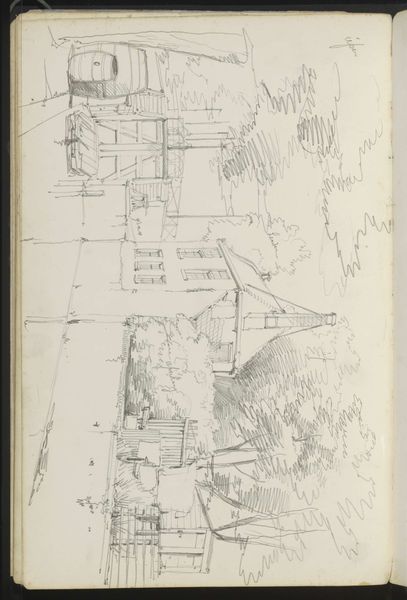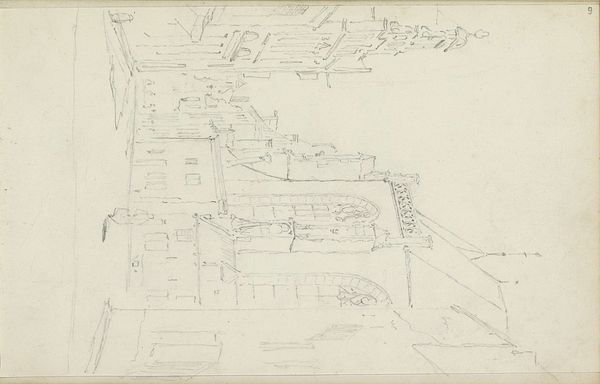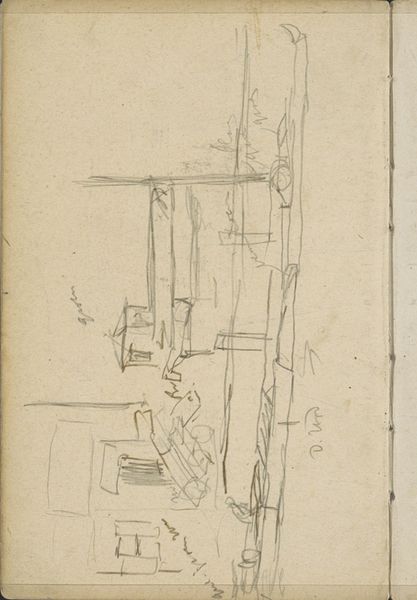
drawing, pencil
#
drawing
#
aged paper
#
toned paper
#
quirky sketch
#
sketch book
#
personal sketchbook
#
sketchwork
#
pen-ink sketch
#
pencil
#
sketchbook drawing
#
cityscape
#
storyboard and sketchbook work
#
sketchbook art
#
realism
Copyright: Rijks Museum: Open Domain
Willem Koekkoek created this pencil drawing of Zaltbommel, likely en plein air, sometime in the mid-19th century. The visible grain of the paper gives the sketch a life, almost as if the buildings are rising from the very material itself. It’s a wonderful reminder that all images—even the most seemingly straightforward—are made of something. The pencil lines, so economically rendered, define the architectural facades with deceptive ease, suggesting both the design and the labor involved in their construction. Consider, too, the labor of the artist. Sketching was an essential skill, a way of absorbing the world through observation and handiwork. In its own way, the drawing also embodies the political economy of 19th-century Holland, a society built by human effort. So, when we look at this cityscape, let's appreciate not only the scene, but also the unseen work that brings it to life.
Comments
No comments
Be the first to comment and join the conversation on the ultimate creative platform.


